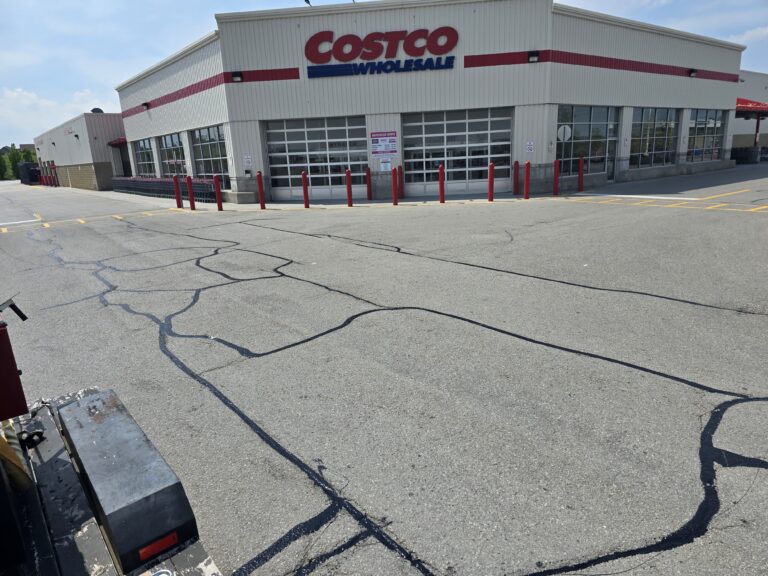
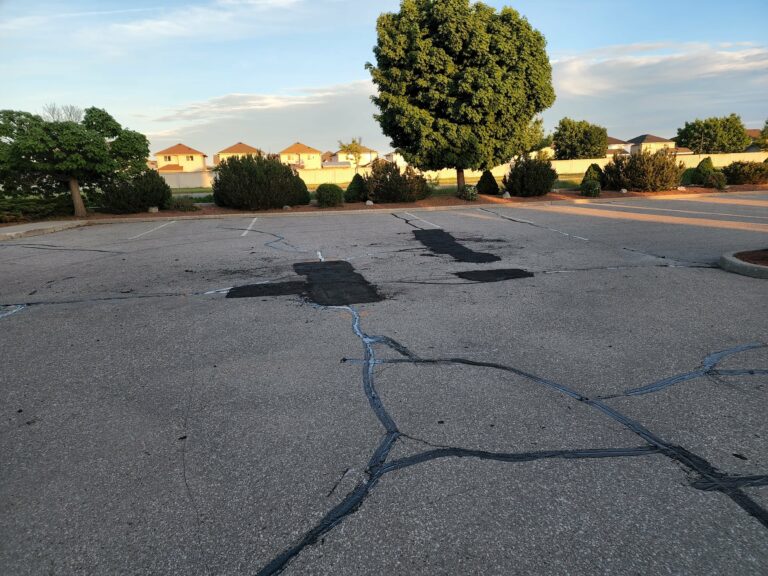
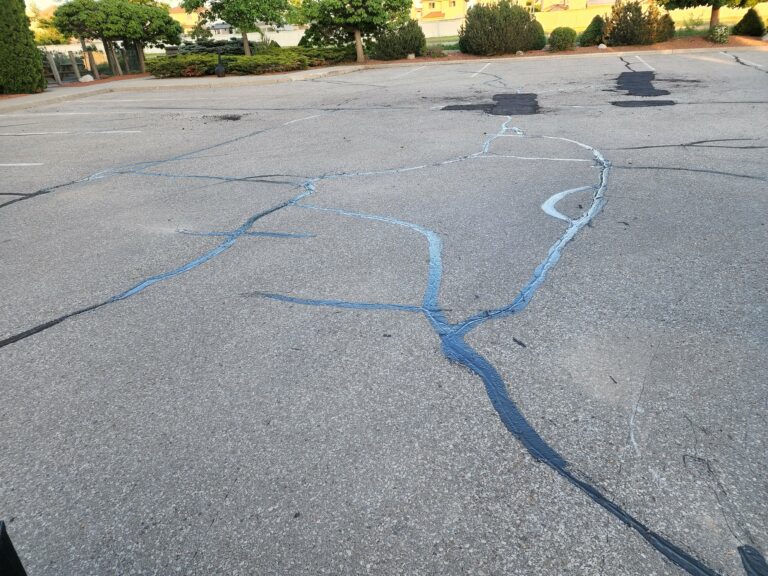
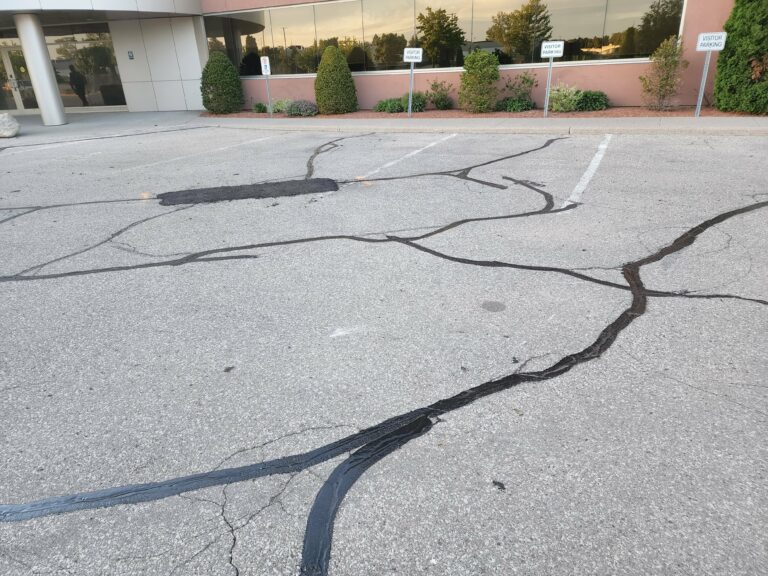
Crack filling is the process of repairing cracks in asphalt surfaces by filling them with a material that seals the crack and prevents water from entering the underlying layers of the pavement. This is done to prevent further deterioration of the pavement, which can be caused by water seeping into the cracks and causing damage to the underlying layers of the pavement.
There are several benefits to crack filling:
It is important to regularly inspect asphalt surfaces for cracks and to fill them as needed to help maintain the integrity and appearance of the pavement.
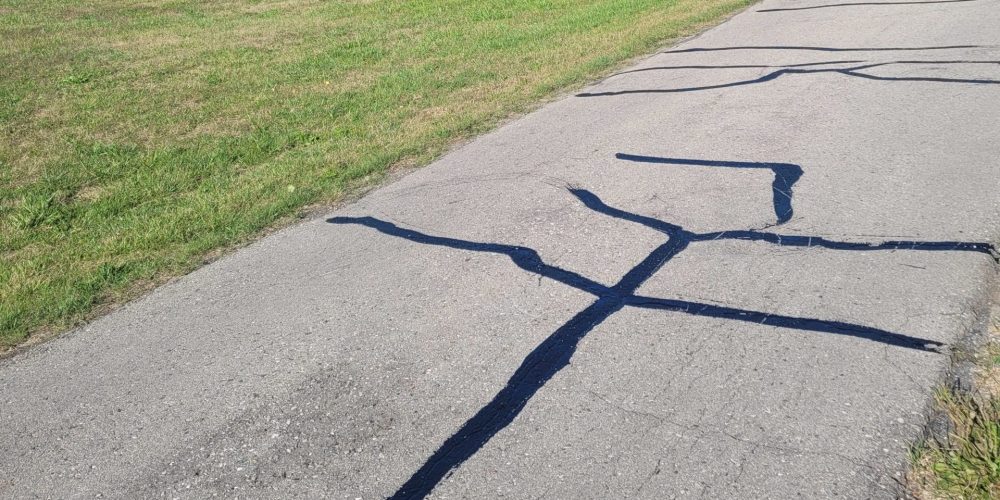
Crack routing is a process that is used to prepare a crack in an asphalt surface for repair. It involves creating a channel along the length of the crack using a routing machine, which can be a hand-held router or a larger, truck-mounted router.
The purpose of crack routing is to create a clean, uniform edge for the crack repair material to adhere to, which helps to ensure a more durable and long-lasting repair. It also helps to remove any debris or contaminants from the crack, which can interfere with the adhesion of the repair material.
There are several benefits to crack routing:
Overall, crack routing is an important step in the process of repairing cracks in asphalt surfaces, as it helps to ensure a more durable and long-lasting repair.
Cold crack filler and hot crack filler are both used to repair cracks in asphalt surfaces, but they are applied in different ways and in different types of weather.
Cold crack filler is a flexible, rubberized material that is used to repair cracks in asphalt surfaces when the weather is cold. It is typically applied by hand, and it is easy to use because it does not require any special equipment or heating. Cold crack filler is best for small to medium-sized cracks and is not suitable for use in cracks that are wider than 1/4 inch.
Hot crack filler, on the other hand, is a more permanent solution for repairing cracks in asphalt surfaces. It is applied using specialized equipment that heats the material to a high temperature and then injects it into the crack. Hot crack filler is best for cracks that are wider than 1/4 inch, as it is more effective at filling and sealing larger cracks. It is also more durable than cold crack filler and is less likely to crack or break under the weight of traffic.
In general, cold crack filler is a good choice for repairing small cracks in asphalt surfaces when the weather is cold, while hot crack filler is a better choice for larger cracks or for use in hot weather.



